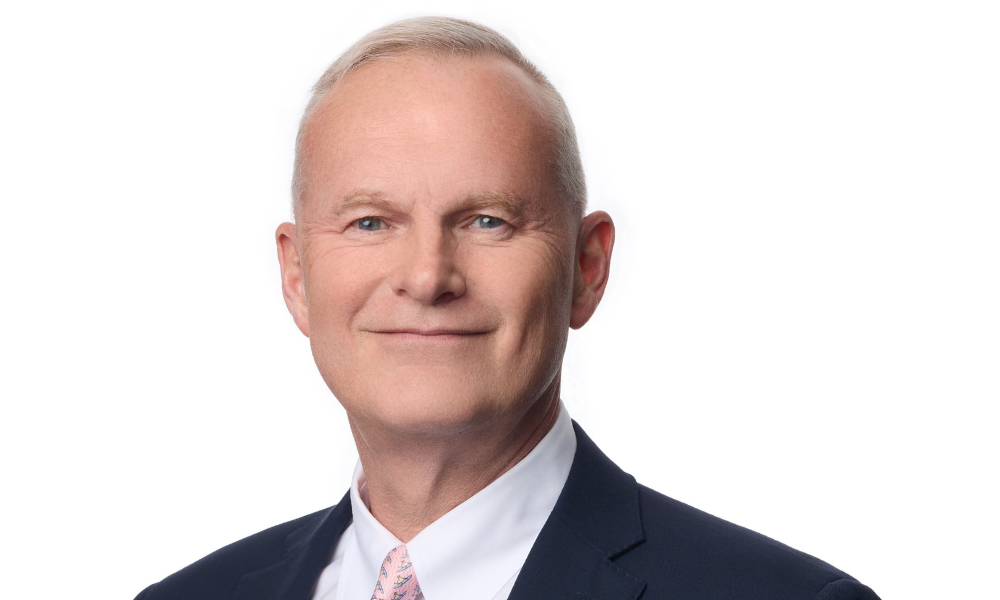Private equity manager and director at Omnigence Asset Management explains why pension plans are turning to niche, inflation-hedging strategies and why private equity needs a rebalance

Canadian pension plans are undergoing a strategic rethink, particularly in their approach to private equity, according to one director at a large asset management firm.
Stephen Johnston believes Canadian pension funds have built up hefty allocations, often between 30 per cent to 50 per cent in alternative assets with the expectation of strong risk-adjusted returns. However, he argues that those investments no longer function as true alternatives.
Over time, the characteristics that once defined alternative strategies - niche markets, specialized management teams, and exposure to under-financialized sectors - have essentially been eroded, he explained.
Instead, what pension plans now hold are mostly large-scale institutional private equity positions that behave more like mainstream market investments than uncorrelated sources of alpha.
"What they're increasingly finding is that they don't really have alternative investments. It's actually beta returns masquerading as alpha,” said Johnston, private equity manager and director at Omnigence Asset Management. “They’ve been disguising that beta with high leverage and financial engineering for probably over a decade but those tools don't drive returns anymore. You can't lever to the same extent you could historically. Financial engineering runs out of an ability to ultimately generate returns so what pension plans are finding is that they have these very large allocations to things that are largely now vanilla and very mainstream and behave like pure market investments. They’re not getting their alpha and these investments don't generate yield, so plans are saying, ‘We have to reduce our allocation to these kinds of strategies’.”
As a result, these allocations have pushed up valuations and eroded any meaningful value proposition. He emphasized the structural issue lies in the scale of capital deployment. Large plans naturally gravitate toward large managers who can absorb big-ticket investments, but those same managers are now part of the problem. The result is fewer exits, longer hold periods, and assets that offer no yield.
Johnston underscored that stagflation is at the core of the issue, and where fund managers need to focus on going forward. Notably, Johnston emphasized that pension plans are actively seeking ways to rebalance exposures to be less long growth and less short inflation, adding that some are beginning to understand the need to hedge stagflation risks.
“We believe in stagflation,” he said. “Farmland benefits from stagflation. You can structure private equity portfolios that benefit from stagflation,” added Johnston, citing automotive maintenance as an example. In a stagflationary environment, people hold onto their cars longer, increasing the demand for repairs.
When screening for alternatives, pension plans ultimately need to screen for things that do well on stagflation. He asserted that it’s critical because it “may actually succeed in re-industrializing.”
“Stagflation is going to continue, and if it gets worse, it's going to impact returns. The historical evidence is incontrovertible,” Johnston said.
Why less is more
To remain invested in alternatives, Johnston asserted that pension plans will need to overhaul their underwriting process. That means transitioning away from making a few massive investments to executing a larger number of smaller, more targeted deals.
But he acknowledged that shift is more than operational, it’s also macroeconomic, pointing out that most alternative investments over the past three decades were effectively long GDP growth and short inflation, often without realizing it. But as stagflationary conditions loom, those assumptions no longer hold.
“Their alternative allocations are basically frozen in time because they were built to benefit from macro drivers that have been around for decades but are no longer here and they can't change. So the only way to change is to try to sell off those positions,” he explained.
For Johnston, the path forward lies in reallocating capital toward smaller, less financialized strategies that can offer real diversification and value. It's also why the secondary market has seen a surge; not just to improve liquidity, but to pivot toward “smaller niche strategies with definitive value drivers, less financialized and better correlation benefits.”
When asked why the secondary market has exploded, Johnston attributed it to a direct response to structural weaknesses in institutional portfolios. With large portions of pension plans tied up in illiquid assets that are taking longer to exit, funds can no longer afford to sit back and wait for maturity “because duration has gone out,” he said. “They don’t see much scope for leverage in financial engineering to drive returns forward.”
Despite many of these positions being built for a different macro environment of steady growth and low inflation, Johnston noted that conditions have changed, particularly in Canada, where above-trend inflation and below-trend growth have persisted for years. Pension funds, he said, are beginning to acknowledge this mismatch.
A key issue is that roughly 40 per cent of these portfolios are structured to benefit from growth and remain vulnerable to inflation. Johnston believes that needs to shift though not drastically overnight.
Consequently, the rise in secondaries is more than just about liquidity. It's part of a broader effort to reconfigure exposures, reduce reliance on outdated return mechanisms like leverage and financial engineering, and reposition toward strategies with real alpha potential, noted Johnston.
“We've got to get out of these big, over-capitalized, sort of plain vanilla segments of the alternative investment universe because the returns are just going to continue to decay,” he emphasized.



